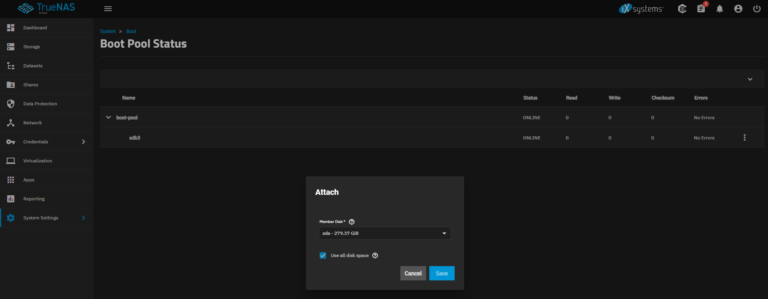[root@drash motion]# mysqladmin -u root -p status
Enter password:
Uptime: 4932 Threads: 1 Questions: 779 Slow queries: 0 Opens: 65 Flush tables: 2 Open tables: 84 Queries per second avg: 0.157
[root@drash motion]# mysqladmin -u root -p debug
Enter password:
[root@drash motion]# mysqladmin -h
mysqladmin: option ‚-h‘ requires an argument
[root@drash motion]# mysqladmin
mysqladmin Ver 9.0 Distrib 5.5.33a-MariaDB, for Linux on i686
Copyright (c) 2000, 2013, Oracle, Monty Program Ab and others.
Administration program for the mysqld daemon.
Usage: mysqladmin [OPTIONS] command command….
-c, –count=# Number of iterations to make. This works with -i
(–sleep) only.
–debug-check Check memory and open file usage at exit.
–debug-info Print some debug info at exit.
-f, –force Don’t ask for confirmation on drop database; with
multiple commands, continue even if an error occurs.
-C, –compress Use compression in server/client protocol.
–character-sets-dir=name
Directory for character set files.
–default-character-set=name
Set the default character set.
-?, –help Display this help and exit.
-h, –host=name Connect to host.
-b, –no-beep Turn off beep on error.
-p, –password[=name]
Password to use when connecting to server. If password is
not given it’s asked from the tty.
-P, –port=# Port number to use for connection or 0 for default to, in
order of preference, my.cnf, $MYSQL_TCP_PORT,
/etc/services, built-in default (3306).
–protocol=name The protocol to use for connection (tcp, socket, pipe,
memory).
-r, –relative Show difference between current and previous values when
used with -i. Currently only works with extended-status.
-s, –silent Silently exit if one can’t connect to server.
-S, –socket=name The socket file to use for connection.
-i, –sleep=# Execute commands repeatedly with a sleep between.
–ssl Enable SSL for connection (automatically enabled with
other flags).
–ssl-ca=name CA file in PEM format (check OpenSSL docs, implies
–ssl).
–ssl-capath=name CA directory (check OpenSSL docs, implies –ssl).
–ssl-cert=name X509 cert in PEM format (implies –ssl).
–ssl-cipher=name SSL cipher to use (implies –ssl).
–ssl-key=name X509 key in PEM format (implies –ssl).
–ssl-verify-server-cert
Verify server’s „Common Name“ in its cert against
hostname used when connecting. This option is disabled by
default.
-u, –user=name User for login if not current user.
-v, –verbose Write more information.
-V, –version Output version information and exit.
-E, –vertical Print output vertically. Is similar to –relative, but
prints output vertically.
-w, –wait[=#] Wait and retry if connection is down.
–connect-timeout=#
–shutdown-timeout=#
–plugin-dir=name Directory for client-side plugins.
–default-auth=name Default authentication client-side plugin to use.
Variables (–variable-name=value)
and boolean options {FALSE|TRUE} Value (after reading options)
——————————— —————————————-
count 0
debug-check FALSE
debug-info FALSE
force FALSE
compress FALSE
character-sets-dir (No default value)
default-character-set auto
host (No default value)
no-beep FALSE
port 0
relative FALSE
socket (No default value)
sleep 0
ssl FALSE
ssl-ca (No default value)
ssl-capath (No default value)
ssl-cert (No default value)
ssl-cipher (No default value)
ssl-key (No default value)
ssl-verify-server-cert FALSE
user (No default value)
verbose FALSE
vertical FALSE
connect-timeout 43200
shutdown-timeout 3600
plugin-dir (No default value)
default-auth (No default value)
Default options are read from the following files in the given order:
/etc/mysql/my.cnf /etc/my.cnf ~/.my.cnf
The following groups are read: mysqladmin client client-server client-mariadb
The following options may be given as the first argument:
–print-defaults Print the program argument list and exit.
–no-defaults Don’t read default options from any option file.
–defaults-file=# Only read default options from the given file #.
–defaults-extra-file=# Read this file after the global files are read.
Where command is a one or more of: (Commands may be shortened)
create databasename Create a new database
debug Instruct server to write debug information to log
drop databasename Delete a database and all its tables
extended-status Gives an extended status message from the server
flush-all-statistics Flush all statistics tables
flush-all-status Flush status and statistics
flush-client-statistics Flush client statistics
flush-hosts Flush all cached hosts
flush-index-statistics Flush index statistics
flush-logs Flush all logs
flush-privileges Reload grant tables (same as reload)
flush-slow-log Flush slow query log
flush-status Clear status variables
flush-table-statistics Clear table statistics
flush-tables Flush all tables
flush-threads Flush the thread cache
flush-user-statistics Flush user statistics
kill id,id,… Kill mysql threads
password [new-password] Change old password to new-password in current format
old-password [new-password] Change old password to new-password in old format
ping Check if mysqld is alive
processlist Show list of active threads in server
reload Reload grant tables
refresh Flush all tables and close and open logfiles
shutdown Take server down
status Gives a short status message from the server
start-slave Start slave
stop-slave Stop slave
variables Prints variables available
version Get version info from server


